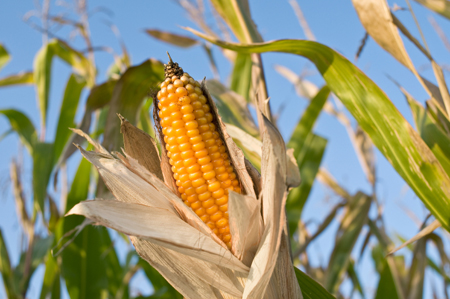GM Corn Plantings Revive in Europe, Thanks to Pest Pressure
Category: Grains
 (Agrimoney) –The proportion of European Union corn grown from genetically modified seed this year reached a record level – if still a small one, as worries over an insect pest prompted Spanish farmers to hike plantings.
(Agrimoney) –The proportion of European Union corn grown from genetically modified seed this year reached a record level – if still a small one, as worries over an insect pest prompted Spanish farmers to hike plantings.
European Union farmers this year sowed 136,337 hectares of genetically engineered corn, from the only variety – a 20-year old Monsanto product – that the bloc has approved for growing.
That area was small compared with the 8.80m hectares that farmers seeded with corn overall.
However, at 1.6%, it represented the biggest proportion since the Monsanto variety, so-called MON810, was approved in 1998.
It also represented an increase of more than 19,000 hectares year on year, and the first rise since 2013, when the area of the EU planted with GM corn hit a record 148,658, data from US Department of Agriculture bureaux in Europe showed.
‘Abnormally high pest pressure’
The increase reflected solely increased plantings in Spain, by far the EU’s biggest grower of genetically modified corn, where seedings recovered to more than 129,081 hectares, as farmers sought to counter elevated levels of the corn borer, a moth larva which MON810 has been engineered to resist.
“Unusually warm conditions prevailing in summer 2015 contributed to an abnormally high pressure of the corn borer, which led to higher use of the [GM] corn in 2016,” the USDA bureaux said in a report.
The corn yield in Spain – where more than 35% of sowings this year were of MON810 – rose by 8.5 tonnes per hectare this year to 116.5 tonnes per hectare, underling its status as the highest-yielding producer in the EU, albeit this year with its result ranking equal to that of the Netherlands, according to data from industry group Coceral.
The adoption of GM corn in Spain is also enhanced by a relatively relaxed distribution chain, with the report noting that the country’s feed grain elevators “do not keep separate production lines for GE and non-GE corn.
“Practically all marketed feed contains GE [genetically engineered] soybean as a source of protein, and consequently it is default labelled as ‘contains GE products’.”
Czechs out
By contrast, in the Czech Republic, area continued to decline last year, by 72% to 112,000 hectares, encouraged by hiccups for farmers in selling GM crop.
“[GM corn] area has gradually decreased due to difficulties in marketing the corn commercially,” the report said, adding that farmers use the crop “for biogas production and on-farm cattle feeding”.
And in Romania, sowing with GM corn was wiped out entirely, down from 771,000 hectares in 2014, as “complex traceability rules have discouraged farmers.
“Feed manufacturers and livestock farmers prefer to avoid segregation in the warehouses and to reduce the paperwork associated with the use of GE corn.”
‘Increasingly difficult’
Despite the continued low take-up of genetically modified corn, in the face of consumer unease over the technology, elevated feed imports from countries which do employ it mean that GM crops are widely consumed away in the EU, the bureaux said.
While trade data “do not differentiate between conventional and GE varieties… The share of GE products in total imports is estimated at around 90% for soybeans, less than 25% for corn, and less than 20% for rapeseed”.
Indeed, as the “global cultivation of GE crops expands, it is increasingly difficult for European importers to source non-biotech soybean products”.




